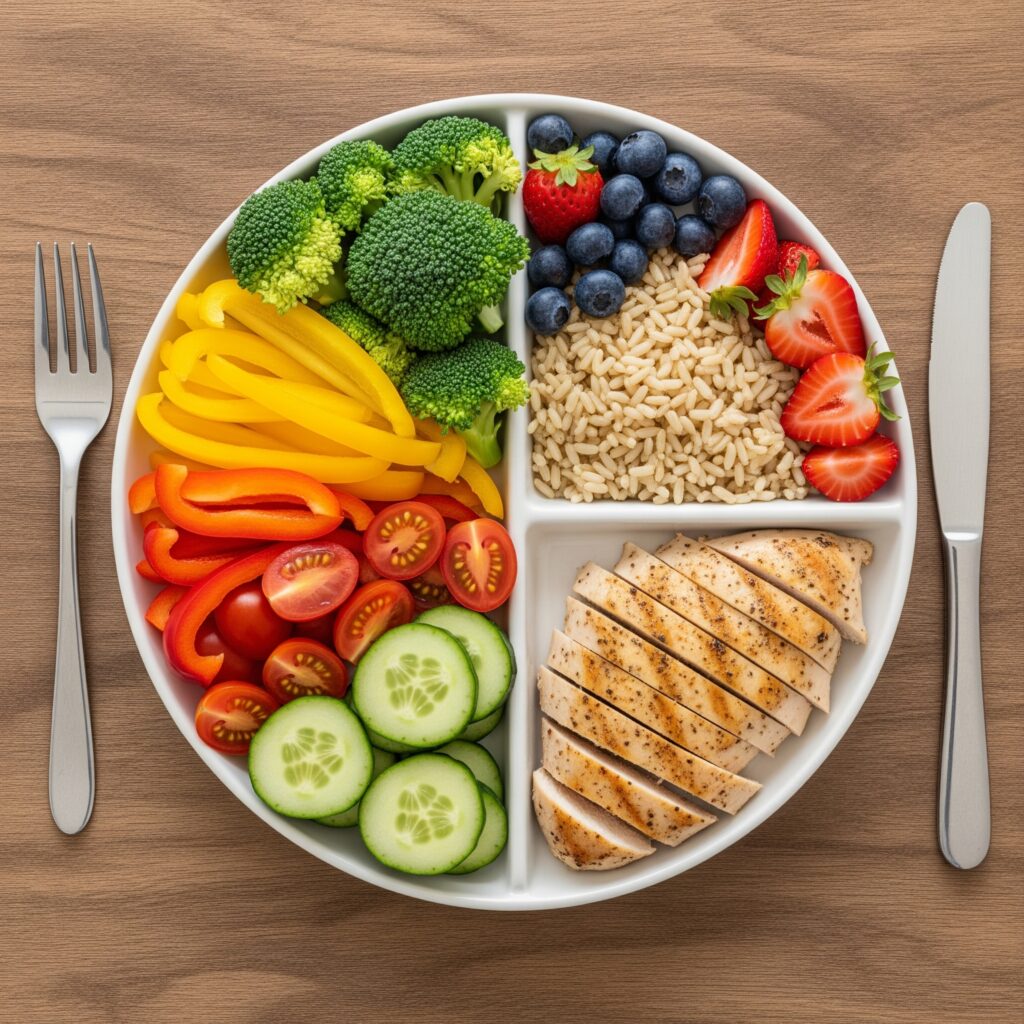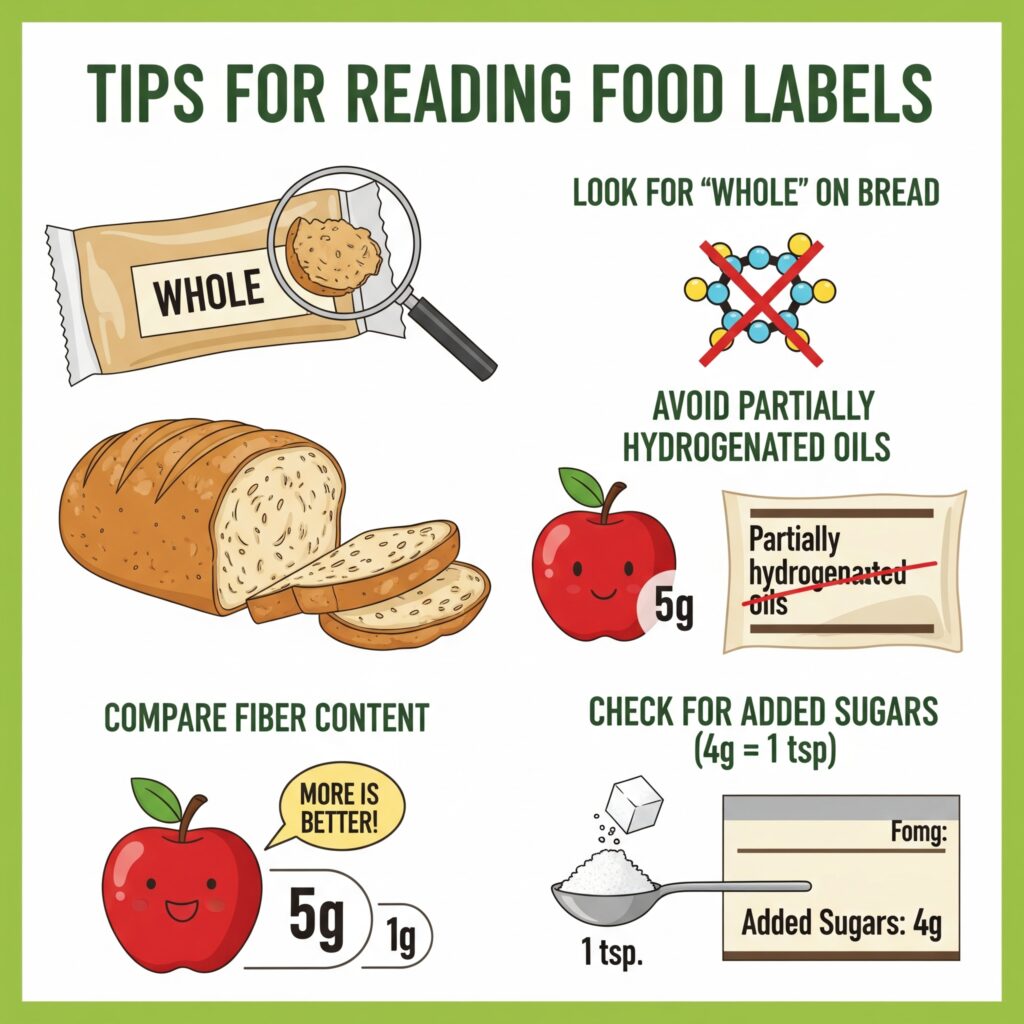While takeout, meal delivery, and convenience foods are more accessible than ever, nothing compares to the comfort, taste, and nutrition of food made in your own kitchen. And it doesn’t have to be complicated—when it comes to home cooking, I always say, “the simpler, the better!”
Mealtime doesn’t have to feel stressful or chaotic. With a little planning and preparation, you can simplify your routine and take the hassle out of cooking—leaving more time to enjoy nourishing, home-cooked meals.
With a few basic steps, you can take the guesswork out of daily meals and build a weekly plan that fits your schedule, supports your health goals, and brings joy back to the kitchen.
Step 1: Make a Menu
A weekly menu is the foundation for success. It gives you a game plan and allows you to tailor meals around your preferences, cravings, and schedule.
Start with inspiration:
- Make a list of favorite meals or new recipes to try.
- Ask other household members for input.
- Take note of busy days when you need quick meals or leftovers.
Plan a realistic number of meals for the week, then plug them into a daily chart. When planning, aim for meals that include:
- Lean protein (chicken, tofu, fish, beans, etc.)
- Quality carbohydrates (whole grains, starchy vegetables, etc.)
- Plenty of fruits and vegetables
Use the Plate Method as a Visual Guide:
- ¼ plate carbohydrates
- ¼ plate protein
- ½ plate non-starchy vegetables and fruits
For daily produce intake, aim for 3 servings of vegetables and 2 servings of fruit.
NOTE: 1 serving = 1 cup raw or ½ cup cooked

Include a Variety with Different Cooking Methods:
- Grilling
- Baking
- Roasting
- Slow cooking (crock pot)
- Quick cooking (Instant Pot)
- Smoking
Consider doubling recipes to create leftovers for lunch or dinner later in the week.
Leftovers can also be transformed into new dishes:
- Turn leftover ham into fried rice
- Shred cooked chicken for burritos or tacos
- Slice leftover roast for French dip sandwiches
Don’t Forget Snacks!
Snacks can help curb cravings and prevent overeating at meals. Aim for a balanced snack of protein + carbohydrate, around150 calories:
- Apple slices + peanut butter
- Whole grain crackers + cheese
- Greek yogurt + berries
- Hummus + raw veggies
Step 2: Create a Shopping List
Turn your menu into a shopping list by breaking meals into ingredients. As you build your list, consider:
- What you already have on hand
- What’s in season or on sale
- How much of each item you’ll need
List ingredients by food group (produce, protein, pantry staples) to make shopping more efficient.
Step 3: Shop Smart
Stick to your list as best you can—this helps prevent impulse purchases and saves time and money.
Label Reading Tips:
- Look for the word “whole” on bread, crackers, and grains to be sure it is whole grain
- Avoid products with “partially hydrogenated oils” (a sign of trans fat)
- Compare fiber between brands and select the one with the highest amount
- Check for added sugars—4 grams = 1 teaspoon

Step 4: Prep Ahead
When you get home from the store, spend a few minutes prepping ingredients to make weeknight cooking easier.
Quick Prep Ideas:
- Rinse and chop veggies for snacks and sides
- Wash and tear lettuce for salads
- Cook meat ahead of time (grill, bake, or slow cook)
- Portion snacks into grab-and-go containers
Meal prep doesn’t have to mean making full meals in advance—even small tasks save time later.
Step 5: Enjoy!
With your plan in place, you can relax and enjoy mealtimes without daily stress or last-minute decisions. Having a menu reduces mental fatigue and cuts down on multiple grocery trips.
Each night, review your plan for the next day so you can:
- Thaw meat
- Chop veggies
- Prep crock pot meals ahead of time
- Enlist help from family members or roommates
As you serve your meals, be mindful of portion sizes and listen to your hunger cues. Stop when you feel comfortably full and save leftovers for later. Practicing mindful eating at home makes it easier to carry these habits into restaurants and social events.
Before cleaning up, take a moment to pack lunch for the next day—it’s a small step that saves time and energy tomorrow.
Takeaways
Make menu planning a weekly habit—it helps reduce stress, supports healthier choices, and takes the guesswork out of daily meals. Shop smart by sticking to your list, and prep ingredients ahead of time whenever possible to save time during the week. Focus on creating balanced meals with simple, wholesome ingredients and be mindful of portion sizes to stay in tune with your hunger cues. Most importantly, enjoy your homemade meals and the confidence that comes from having a plan

Schedule with SaRene!
SaRene Brooks, RDN, CDCES, is a dietitian and diabetes educator passionate about helping families thrive with type 1 diabetes. As a mom of three—two with T1D—she blends professional expertise with personal insight, offering guidance on diabetes care, nutrition, weight management, and wellness. SaRene is also a grandma, creative cook, and educator dedicated to helping people reach their health goals.

